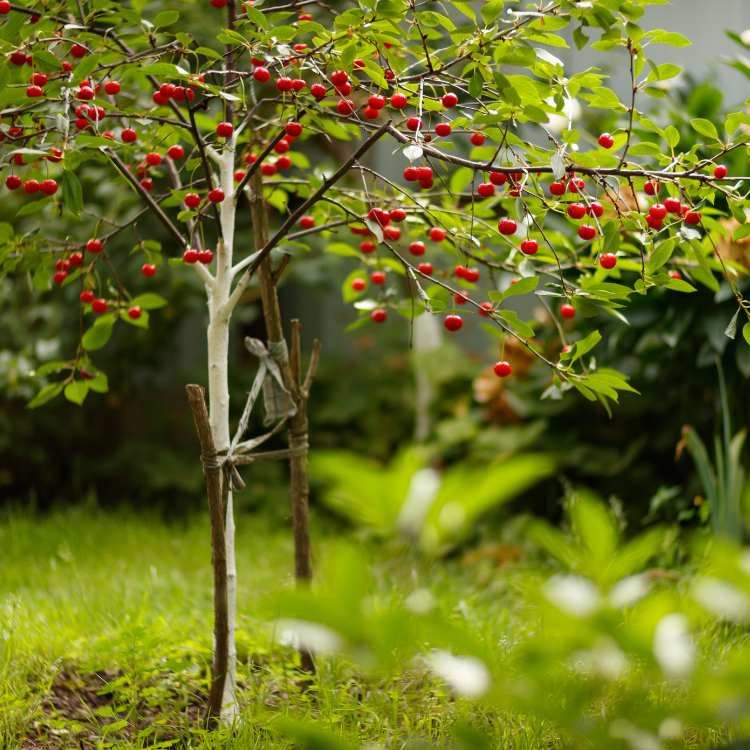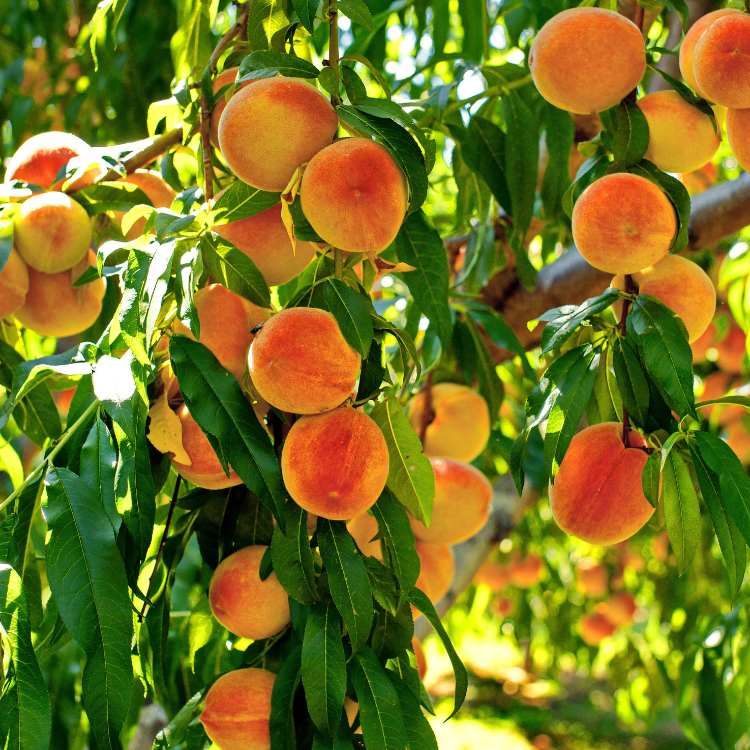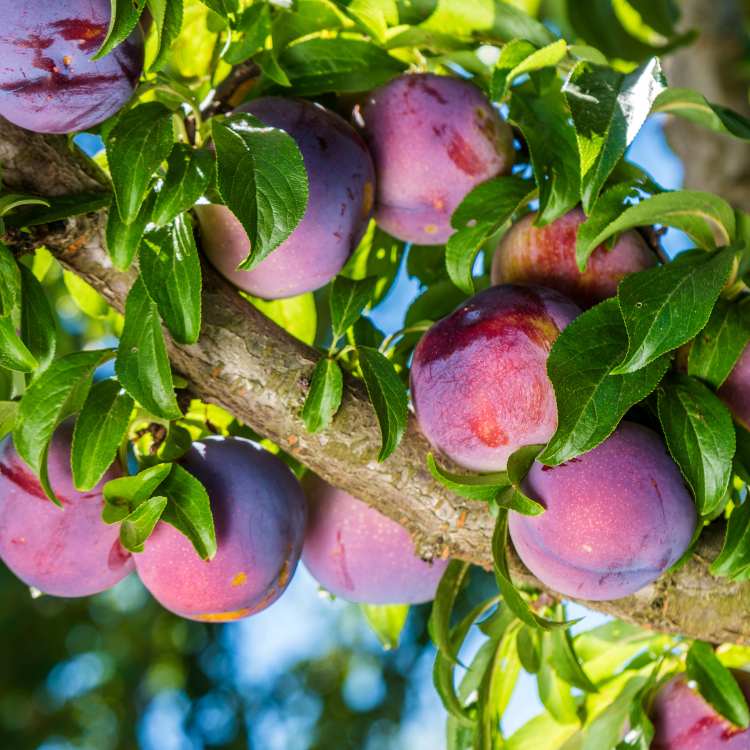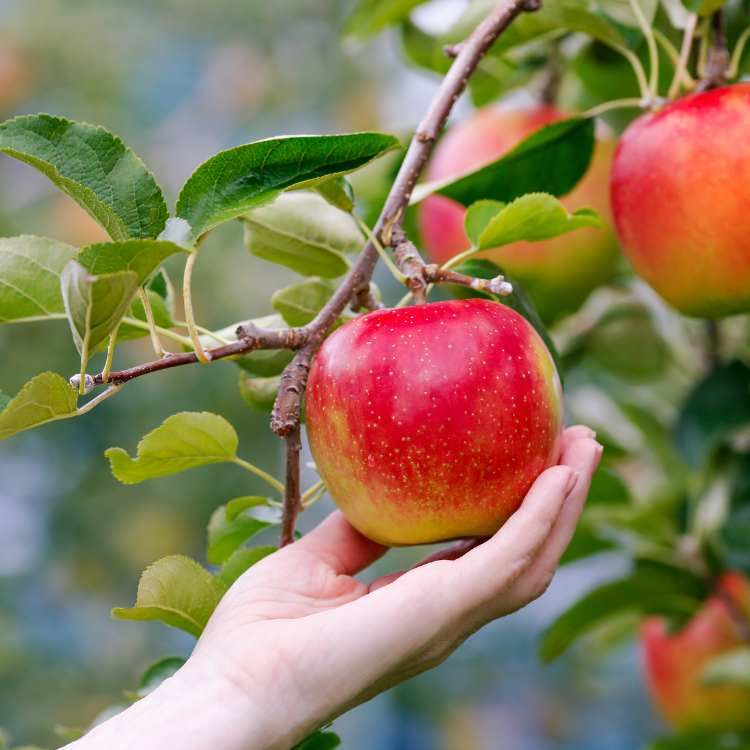
Key Takeaways
Compact fruit trees, like dwarf and semi-dwarf varieties, are perfect for small spaces and still produce full-sized fruits.
Choosing the right variety for your climate and space is crucial for a successful harvest.
Proper planting and initial care set the foundation for a thriving compact fruit tree.
Pruning and training techniques, such as espaliering, can maximize space and fruit production.
Starting a survival garden with compact fruit trees can lead to self-sufficiency and provide nutritional benefits.
Ever dreamt of plucking ripe, juicy fruits from your very own garden but thought you didn’t have enough space? Well, think again! Compact fruit trees are the game-changers for small gardens, balconies, and patios, enabling anyone to harvest homegrown fruits, no matter the size of their outdoor area.
What Are Compact Fruit Trees?
Imagine a fruit tree that doesn’t tower over your head but instead fits neatly into a cozy corner of your garden. Compact fruit trees are specially bred to take up less space while still providing you with a bounty of fruit. These miniature marvels are perfect for gardeners who want to maximize their yield without needing an orchard’s worth of space.
Dwarf and Semi-Dwarf Varieties
These little giants come in two main types: dwarf and semi-dwarf. Dwarf varieties typically grow to be about six to eight feet tall, whereas semi-dwarfs can reach up to twelve feet. Despite their stature, they don’t skimp on fruit size or quality – you’ll get the same luscious fruit as you would from their full-sized cousins, just in a more manageable package.
Most importantly, because of their size, these trees are easier to maintain. You won’t need a ladder to reach the top branches, and they’re simpler to protect from pests and harsh weather. Plus, they often start bearing fruit sooner than larger trees, sometimes as early as two years after planting.
Ideal Conditions for Small Fruit Trees
To thrive, compact fruit trees need the right conditions. Full sun, good drainage, and proper soil are the trifecta of success. If you’re working with limited ground space, containers are your best friends. Just make sure they’re large enough to accommodate the tree’s roots and have holes for drainage.
And don’t forget about pollination – some fruit trees need a buddy to produce fruit, so you may need to plant two different varieties close to each other. But don’t worry; with compact trees, you won’t need much extra space for that second tree.
Starting Your Survival Garden with Compact Dwarfs


When starting your survival garden, the aim is to be self-sufficient, and what better way than to grow your own fruit? Compact fruit trees can be a cornerstone of this garden, providing fresh produce and a sense of security in knowing you have a sustainable food source right at home.
Selecting the Right Varieties
Before you start, research which fruit trees are best suited for your region’s climate and soil. Apples, peaches, cherries, and plums are popular choices for compact varieties. Consider also the tree’s chill hours (the number of hours below 45°F in a year) to ensure it will fruit properly.
For those looking to purchase compact fruit trees, Survival Essentials offers a selection that could be the perfect addition to your survival garden. Check out their collection and find the ideal trees for your space.
Planting and Initial Care
Once you’ve selected your trees, it’s time to plant. Choose a spot that gets at least six hours of sunlight daily. If you’re planting in the ground, make sure to space the trees according to their specific needs – even dwarfs need room to grow.
For container planting, use high-quality potting mix and a container that’s slightly larger than the root ball. Water thoroughly after planting and keep the soil consistently moist, but not waterlogged, as this can lead to root rot.
Aftercare is just as important. Mulching helps retain moisture and regulate soil temperature, while a balanced fertilizer can give your trees the nutrients they need to produce delicious fruit.
And that’s just the beginning. Stay tuned as we delve deeper into how to nurture and get the most out of your compact fruit trees, ensuring your survival garden is not only a source of sustenance but also a place of beauty and tranquility.
Remember, starting a garden with compact fruit trees is not just about growing food; it’s about cultivating a resilient lifestyle. With these small but mighty trees, you’re not just planting for today – you’re investing in a sustainable future.
As you watch your compact fruit trees take root and flourish, remember that the key to a plentiful harvest lies in the art of pruning. Pruning not only shapes your tree but also encourages stronger branches that can support the weight of your future fruits. It’s a simple yet impactful practice; by removing dead or overgrown branches, you ensure that sunlight and air can reach the inner parts of the tree, reducing the risk of disease and promoting better fruit quality.
Pruning for Productivity
Pruning should be done in the late winter or early spring before new growth begins. Start by removing any dead, diseased, or crossing branches. Thin out the canopy to allow light to penetrate and air to circulate. This is crucial because a tree that breathes and basks in adequate sunlight is a tree that will reward you with a bountiful harvest.
Vertical Gardening with Espaliers
When space is at a premium, think vertical. Espaliering is a fantastic technique to train your fruit trees to grow flat against a wall or trellis. Not only does this save space, but it also turns your garden into a living work of art. Espaliers can create a stunning visual impact in your garden and, with a little patience and skill, you can enjoy both beauty and yield.
Begin by selecting a tree with a strong central leader and supple side branches. Attach these branches horizontally to your support structure, and as they grow, continue to tie them, encouraging a fan or candelabra shape. This method not only optimizes space but also makes for easier picking and maintenance.
Common Challenges and Solutions
Even the most carefully tended gardens face challenges, but don’t let that discourage you. Common issues like pests and diseases can be managed with a proactive approach and the right knowledge.
Managing Pests and Disease
One of the biggest threats to compact fruit trees is pests and diseases. Regular inspections are key—catching problems early can save your harvest. If you spot signs of infestation or illness, such as discolored leaves or damaged fruit, act swiftly. Natural remedies like neem oil can be effective against a range of pests and fungal diseases.
Encouraging beneficial insects to your garden, like ladybugs and lacewings, can also help control pest populations naturally. And remember, a strong tree is the best defense, so keep your trees well-fed and watered.
Ensuring Proper Pollination
For fruit to form, pollination is essential. While some compact fruit trees are self-pollinating, others require a pollinator buddy. If you have limited space, choose self-pollinating varieties or those that can cross-pollinate with each other. Bees are the primary pollinators, so creating a bee-friendly environment with flowers that bloom at the same time as your fruit trees can greatly enhance your trees’ pollination rates.
Harvesting: Reaping the Rewards

The moment you’ve been nurturing for: harvest time. The sight of branches laden with ripe fruits is a gardener’s delight and a sign of your dedication to your survival garden.
When to Pick Your Fruit
Harvest time varies depending on the fruit type and variety. Generally, fruit is ready when it’s the right color, feels slightly soft to the touch, and comes away easily from the branch. Taste-testing is often the best way to tell if your fruit is ready—there’s nothing like the flavor of a freshly picked, perfectly ripe fruit from your own garden.
Keep in mind that some fruits, like apples, can be picked before they’re fully ripe and allowed to ripen off the tree. This can extend your harvest period and prevent waste.
Storage and Preservation Tips
After the harvest, proper storage is key to enjoying your fruits for as long as possible. Most fruits keep best in a cool, dark place. Some, like apples, can be stored for months under the right conditions. For fruits that don’t store well, consider preserving them by canning, drying, or freezing.
By preserving your harvest, you ensure a steady supply of fruit even out of season, bringing you one step closer to year-round self-sufficiency.
Sustainable Practices for Your Survival Garden
Sustainability is at the heart of a survival garden. It’s about creating a cycle that nourishes both you and the earth, season after season.
Recycling Organic Waste
One of the simplest ways to contribute to your garden’s sustainability is by composting organic waste. Fruit scraps, leaves, and other plant materials can be turned into nutrient-rich compost that feeds your soil and plants. This not only reduces waste but also closes the loop in your garden ecosystem.
And remember, the journey to a fruitful survival garden is ongoing. It’s about learning, adapting, and enjoying the process. So roll up your sleeves, plant some compact fruit trees, and savor the satisfaction of growing your own food. It’s a small step toward self-sufficiency that can yield big rewards.
Water Conservation Techniques
With climate change impacting water availability, conserving water in your garden is more critical than ever. Mulching is a must – it keeps the soil moist and reduces the need for frequent watering. Drip irrigation systems are a godsend for the water-wise gardener, delivering moisture directly to the roots where it’s needed most. And why not collect rainwater? Setting up a rain barrel is an easy and effective way to harness natural resources for your garden’s benefit.
Another tip is to water early in the morning or late in the evening when temperatures are cooler. This minimizes evaporation and ensures that your trees get the most out of every drop. Remember, deep but infrequent watering encourages deep root growth, which helps trees withstand drought better.
Enrich Your Life with Homegrown Fruits
There’s something incredibly rewarding about biting into a piece of fruit that you’ve grown yourself. It’s a taste of your labor, your care, and your commitment to a sustainable lifestyle.
Health and Nutritional Benefits
Fresh fruits are packed with vitamins, minerals, and antioxidants, and growing them at home means you can enjoy these health benefits at their peak. Plus, you have the peace of mind knowing that your fruits haven’t been treated with harmful pesticides or chemicals.
Homegrown fruits aren’t just better for you; they’re better for the planet. By cultivating your own compact fruit trees, you’re reducing your carbon footprint, minimizing the need for transportation, and contributing to a greener world.
Fruit Trees as an Investment in Self-Sufficiency
Investing in compact fruit trees is investing in your future. In times of uncertainty, a survival garden offers a sense of security. It’s not just about food; it’s about resilience, independence, and the ability to care for yourself and your loved ones, no matter what the future holds.
And when you’re ready to take the next step in securing your survival garden, consider Survival Essentials’ selection of compact fruit trees. They’ve got a variety of options that are ideal for small spaces and can help you achieve your self-sufficiency goals. Visit their collection and start planning your garden today.
FAQs
Got questions? Here are some answers to common queries about growing compact fruit trees in your survival garden.
What Fruit Trees Can Be Grown in Containers?
Many compact fruit trees are well-suited to container growing. Apples, pears, cherries, and citrus fruits are all great choices. Just be sure to choose a container large enough to accommodate the tree’s mature size and provide adequate drainage.
How Much Space Do I Need for Dwarf Fruit Trees?
Dwarf fruit trees can thrive with just a few feet of space. For example, dwarf apple trees can be planted about four feet apart. Check the specific spacing requirements for the variety you choose to ensure your trees have room to grow.
Do Compact Fruit Trees Produce Full-Sized Fruits?
Yes, they do! The fruit from compact trees is the same size as those from larger trees. The only difference is the size of the tree itself, which is perfect for smaller gardens.
Can I Grow Different Types of Fruit on One Tree?
Absolutely. Multi-grafted trees, also known as “fruit salad trees,” can grow several types of fruit on one tree. They’re an excellent option for small spaces and can provide a variety of fruits from a single tree.
How Long until Dwarf Fruit Trees Bear Fruit?
Most dwarf fruit trees will start bearing fruit within two to three years after planting. However, some may take a little longer, so patience is key. Proper care and maintenance will ensure your trees reach their fruit-bearing potential.
Remember, the key to a successful survival garden is not just the plants you choose, but the care and passion you put into them. With compact fruit trees, even the smallest space can transform into a lush, fruit-bearing oasis. So, what are you waiting for? Start planting and enjoy the sweet rewards of your labor!







Leave a Reply